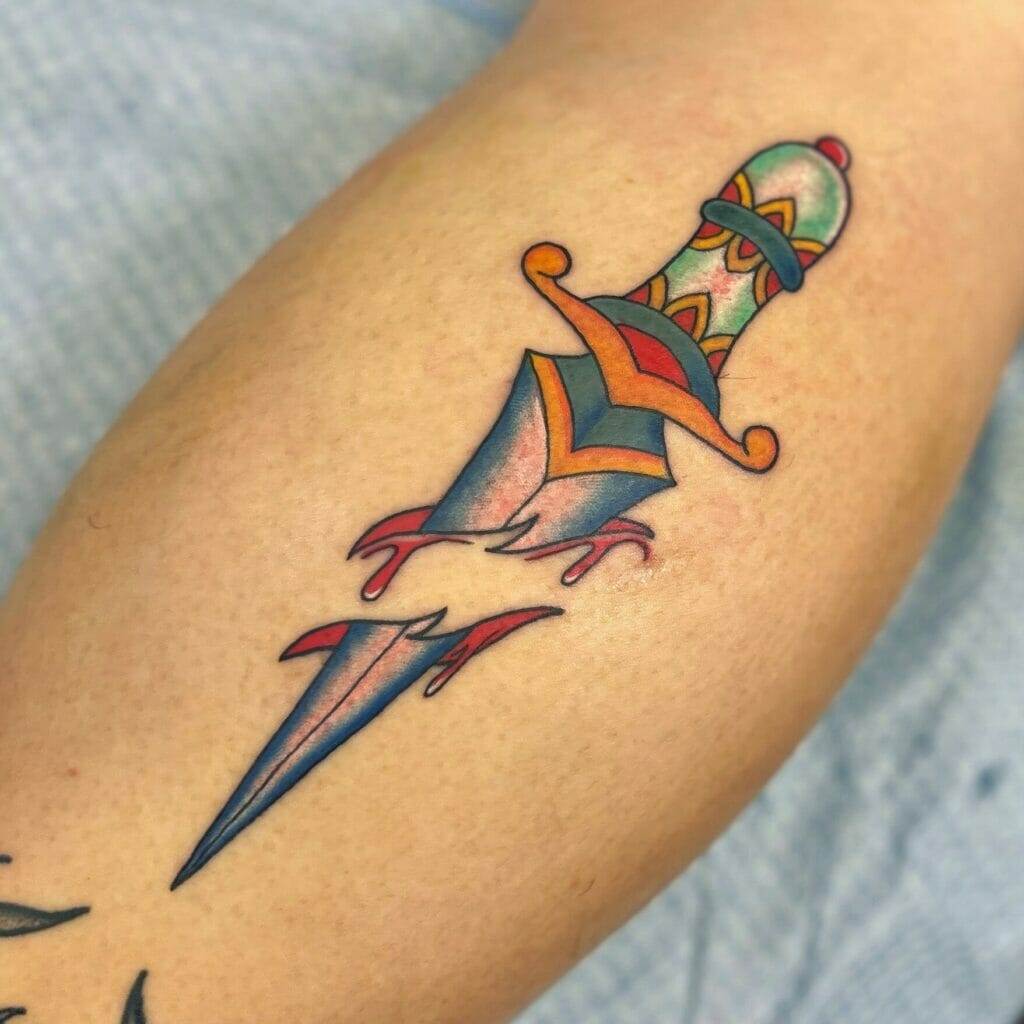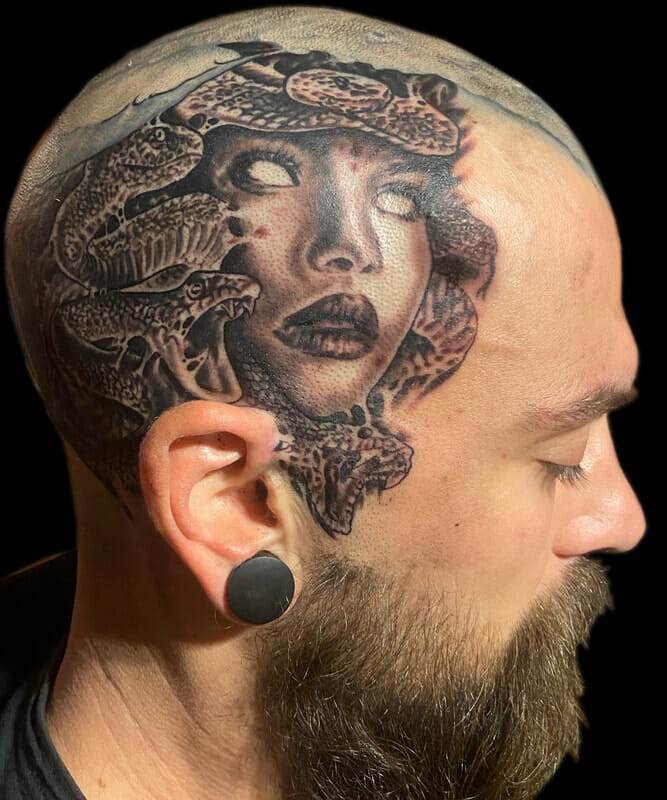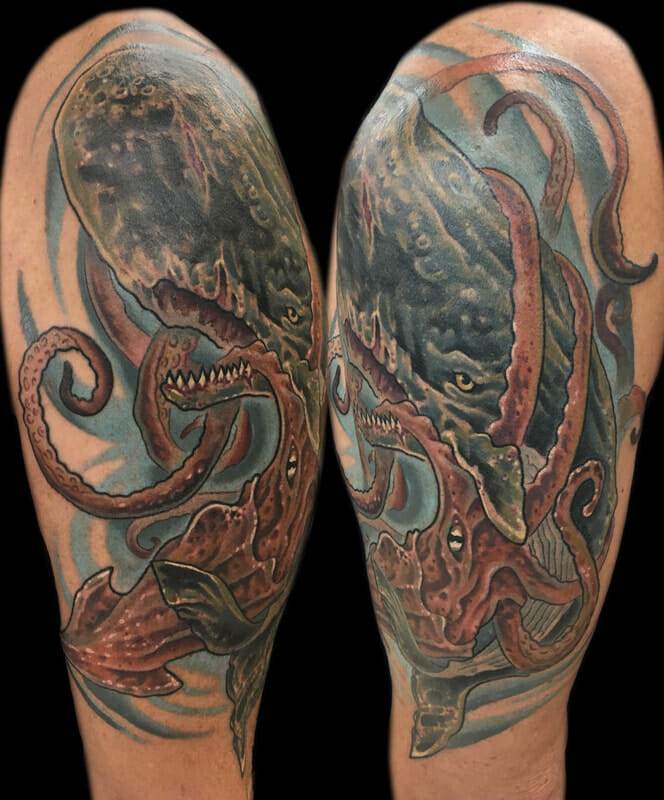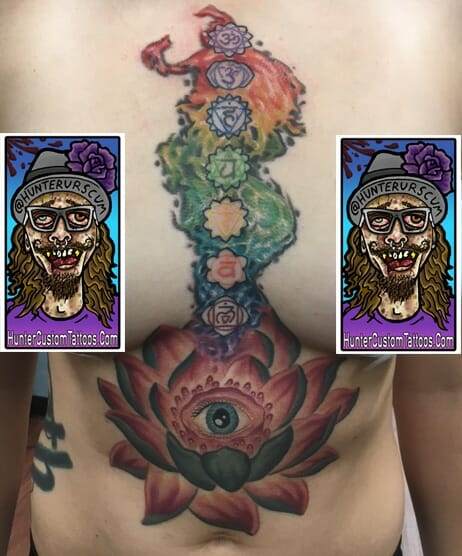Tattooing has a rich history that dates back thousands of years. From ancient civilizations to modern times, tattoos have been used as a form of self-expression, cultural identity, and personal adornment. The art of tattooing has evolved over time, with advancements in technology and techniques allowing for more intricate and detailed designs. In recent years, tattoos have become increasingly popular, with people from all walks of life embracing this form of body art.
The growing popularity of tattoos can be attributed to several factors. Firstly, society’s perception of tattoos has shifted, with them no longer being seen as taboo or associated solely with criminal activity. Tattoos are now widely accepted and celebrated as a legitimate form of art and self-expression. Additionally, the rise of social media has played a significant role in the popularity of tattoos. Platforms like Instagram have allowed tattoo artists to showcase their work to a global audience, inspiring others to get inked.
Choosing the Right Design: What Makes a Tattoo Stand Out
When it comes to getting a tattoo, choosing the right design is crucial. Your tattoo should be a reflection of your personality and something that holds meaning for you. It’s important to take the time to find inspiration and explore different design options before making a decision.
Finding inspiration for your tattoo design can come from various sources. You can look to your interests, hobbies, or personal experiences for ideas. For example, if you’re passionate about nature, you might consider getting a tattoo of your favorite flower or animal. You can also draw inspiration from art, literature, or cultural symbols that hold significance to you.
What sets a tattoo apart and makes it stand out is the combination of various elements. These elements include the design itself, the placement on the body, the size and scale, and whether it’s in color or black and white. A well-designed tattoo will have a balance of these elements, creating a visually appealing and impactful piece of art.
Placement Matters: Where to Put Your Tattoo for Maximum Impact
The placement of your tattoo is just as important as the design itself. The location on your body can greatly affect the overall impact and visibility of your tattoo. When choosing a placement, there are several factors to consider.
One factor to consider is the visibility of your tattoo. If you want your tattoo to be easily seen, you might choose a placement on a highly visible area such as the forearm, upper arm, or calf. On the other hand, if you prefer a more discreet tattoo, you might opt for a placement on the back, ribcage, or thigh.
Another factor to consider is the meaning behind the placement. Different areas of the body have different symbolic meanings. For example, tattoos on the chest are often associated with strength and courage, while tattoos on the wrist can symbolize individuality and creativity. It’s important to choose a placement that aligns with the message or symbolism you want your tattoo to convey.
Lastly, the placement of your tattoo can also affect its overall look and composition. Some designs may be better suited for certain areas of the body due to their shape or size. It’s important to work with your tattoo artist to determine the best placement for your chosen design.
Size and Scale: How to Make a Statement with Your Tattoo
The size and scale of your tattoo can greatly impact its visual impact and statement. Choosing the right size and scale is crucial in creating a tattoo that stands out and makes a statement.
The size of your tattoo should be proportionate to the area of the body it will be placed on. A small, intricate design may get lost on a large area such as the back or thigh, while a large, bold design may overwhelm a smaller area like the wrist or ankle. It’s important to consider the size of your chosen design and how it will fit on the chosen placement.
Scale refers to the relationship between different elements within the tattoo design. A well-balanced tattoo will have a harmonious scale, with each element complementing and enhancing the overall composition. For example, if you have a design with both large and small elements, it’s important to ensure that they are balanced and not overpowering each other.
To make a statement with your tattoo, consider opting for a larger size or bolder design. These tattoos tend to be more eye-catching and can create a stronger visual impact. However, it’s important to remember that bigger doesn’t always mean better. It’s crucial to choose a size and scale that suits your personal style and preferences.
Color or Black and White: Which Works Best for Your Design?
When it comes to tattoos, one of the decisions you’ll need to make is whether to go for color or black and white. Both options have their own unique advantages and considerations.
Color tattoos can be vibrant and visually striking. They allow for more creativity and can bring a design to life. Color tattoos are especially popular for designs that involve flowers, animals, or other natural elements. However, it’s important to note that color tattoos may require more maintenance over time as the colors can fade or change with exposure to sunlight.
On the other hand, black and white tattoos can be equally impactful in their simplicity. They can create a bold and timeless look, especially for designs with strong lines or intricate details. Black and white tattoos also tend to age well over time, as they are less prone to fading or discoloration.
When choosing between color and black and white, consider the overall look you want to achieve and how it will complement your chosen design. It’s also important to consult with your tattoo artist, as they can provide guidance based on their expertise and experience.
Preparing for Your Tattoo: What to Expect and How to Get Ready

Before getting a tattoo, there are several steps you can take to prepare yourself mentally and physically for the experience.
Firstly, it’s important to do your research and educate yourself about the tattooing process. Understand what to expect during the tattooing process, including the level of pain, the duration of the session, and the aftercare requirements. This will help you mentally prepare and manage your expectations.
Secondly, make sure you are in good physical health before getting a tattoo. Avoid alcohol or drugs that can thin your blood and increase bleeding during the tattooing process. Get a good night’s sleep and eat a healthy meal before your appointment to ensure you have enough energy for the session.
It’s also important to take care of your skin leading up to your tattoo appointment. Keep the area clean and moisturized, but avoid applying any lotions or creams on the day of your appointment as they can interfere with the tattooing process.
Lastly, mentally prepare yourself for the pain associated with getting a tattoo. While everyone’s pain tolerance is different, it’s important to be aware that getting a tattoo can be uncomfortable or even painful. Practice deep breathing techniques or listen to calming music during the session to help manage any discomfort.
The Tattoo Process: Step by Step Guide to Creating a Bold and Beautiful Tattoo
The tattooing process involves several steps, from consultation to aftercare. Here is a step-by-step guide to creating a bold and beautiful tattoo:
1. Consultation: The first step is to schedule a consultation with your chosen tattoo artist. During this meeting, you will discuss your design ideas, placement options, and any other details related to your tattoo. The artist may also provide input and suggestions based on their expertise.
2. Design creation: Once you have finalized the details of your tattoo, the artist will create a design based on your specifications. They may provide a sketch or digital rendering for you to review and approve before moving forward.
3. Stencil application: On the day of your appointment, the artist will create a stencil of the design and apply it to your skin. This stencil serves as a guide for the tattooing process, ensuring that the design is placed correctly and accurately.
4. Tattooing: Once the stencil is applied, the artist will begin the tattooing process. They will use a tattoo machine with sterilized needles to inject ink into the skin. The artist will work carefully and methodically, following the lines of the stencil and shading or coloring as needed.
5. Breaks and touch-ups: Depending on the size and complexity of your tattoo, there may be breaks during the session to allow for rest and to assess the progress. The artist may also need to do touch-ups or make adjustments as they go along to ensure a flawless result.
6. Final touches and aftercare: Once the tattoo is complete, the artist will clean the area and apply a protective ointment or bandage. They will provide you with detailed aftercare instructions to ensure proper healing and preservation of your tattoo.
Aftercare: How to Care for Your Tattoo to Ensure It Stays Beautiful
Proper aftercare is essential in ensuring that your tattoo heals properly and stays beautiful for years to come. Here are some tips for caring for your tattoo after getting it:
1. Follow your artist’s instructions: Your tattoo artist will provide you with specific aftercare instructions tailored to your tattoo. It’s important to follow these instructions carefully, as they are designed to promote healing and prevent infection.
2. Keep it clean: Gently wash your tattoo with mild soap and warm water, using your clean hands or a soft cloth. Avoid scrubbing or rubbing the area, as this can irritate the skin. Pat dry with a clean towel or let it air dry.
3. Apply ointment or moisturizer: After washing, apply a thin layer of ointment or moisturizer recommended by your tattoo artist. This will help keep the skin hydrated and prevent it from drying out.
4. Avoid picking or scratching: It’s important to resist the urge to pick or scratch at your tattoo, as this can disrupt the healing process and cause scarring. If the area becomes itchy, gently pat or tap it instead of scratching.
5. Protect from the sun: Direct sunlight can fade and damage your tattoo, especially during the healing process. Avoid prolonged sun exposure and always apply sunscreen with a high SPF to protect your tattoo when you are outside.
6. Avoid swimming or soaking: For the first few weeks after getting your tattoo, avoid swimming in pools, hot tubs, or bodies of water. Soaking in water can soften the scabs and increase the risk of infection.
Touch-Ups and Maintenance: Keeping Your Tattoo Looking Fresh
Over time, tattoos may require touch-ups or maintenance to keep them looking fresh and vibrant. Here are some tips for maintaining the longevity of your tattoo:
1. Schedule touch-ups: Depending on the design, color, and placement of your tattoo, you may need to schedule touch-up sessions with your tattoo artist. Touch-ups can help refresh the colors, fill in any areas that have faded, or make any necessary adjustments.
2. Protect from the sun: Continued sun exposure can cause your tattoo to fade over time. To keep your tattoo looking fresh, always apply sunscreen with a high SPF when you are exposed to the sun.
3. Moisturize regularly: Keeping your skin hydrated is essential in maintaining the vibrancy of your tattoo. Apply a moisturizer regularly to prevent dryness and keep the skin supple.
4. Avoid excessive exfoliation: Scrubbing or exfoliating the area around your tattoo can cause the ink to fade or become patchy. Be gentle when cleansing or exfoliating your skin, and avoid using harsh products or scrubbing brushes directly on your tattoo.
5. Maintain a healthy lifestyle: Your overall health and lifestyle can also impact the appearance of your tattoo. Eating a balanced diet, staying hydrated, and avoiding excessive alcohol or drug use can help keep your skin in optimal condition.

Ink with Impact – How to Create a Tattoo That Leaves a Lasting Impression
In conclusion, getting a tattoo is a personal and meaningful decision. By considering factors such as design, placement, size and scale, color or black and white, and finding the right artist, you can create a tattoo that reflects your unique personality and leaves a lasting impression.
The art of tattooing has come a long way, from its ancient origins to its current popularity. Tattoos have become a legitimate form of self-expression and are celebrated as a beautiful art form. With careful consideration and proper aftercare, you can ensure that your tattoo stays beautiful for years to come.
Embrace the art of tattooing and create a tattoo that speaks to you. Whether it’s a small symbol with deep meaning or a large, vibrant design that makes a statement, your tattoo can be a powerful form of self-expression that reflects your individuality. So go ahead, get inked, and leave your mark on the world.



